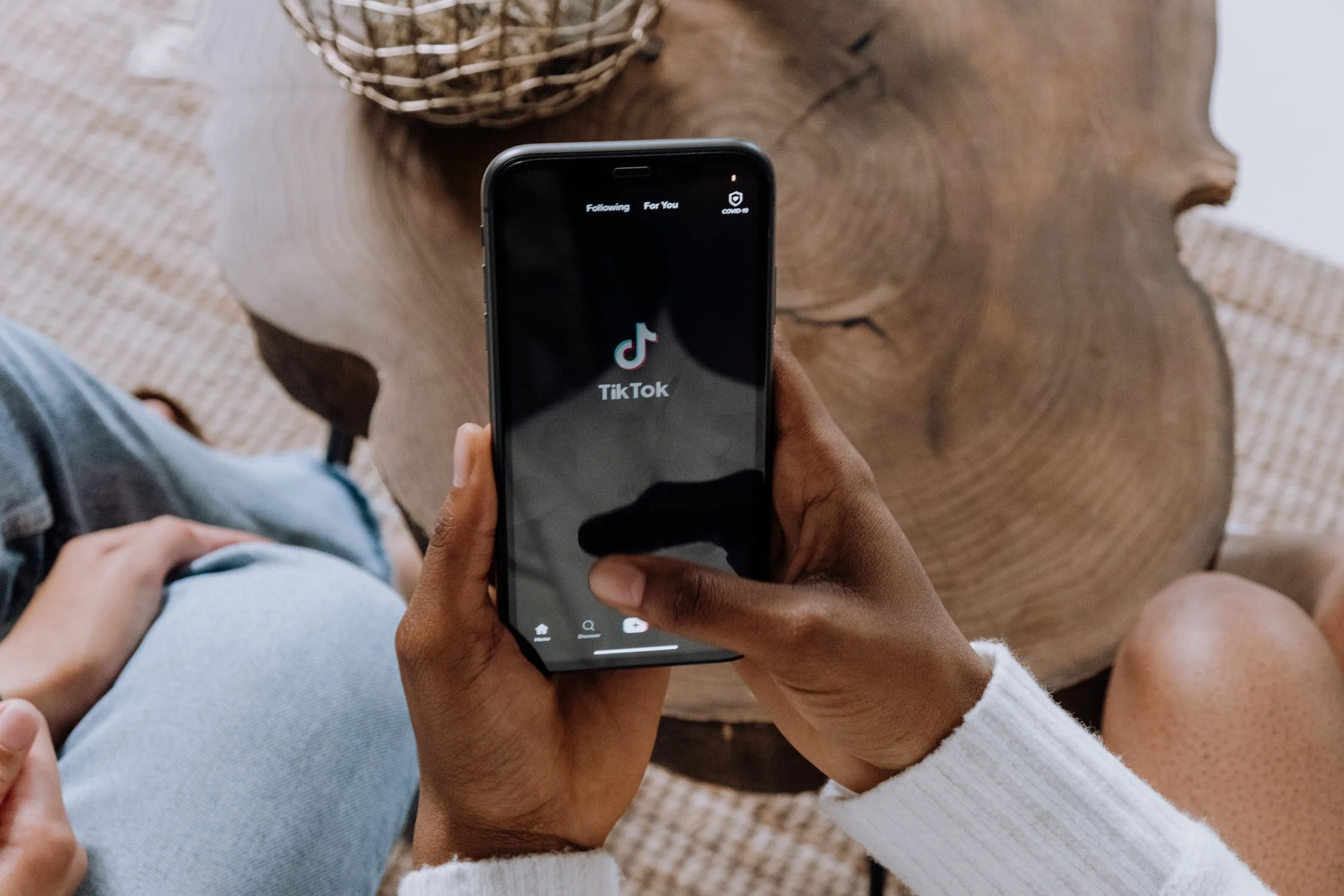TikTok: Disrupting The Social Media World
There is no doubt that TikTok is probably the hottest social networking app at the moment. Out of the 2020 ashes, a new form of social media opened the way for internet culture, education, and activism.
TikTok is a video-based social media app of unusual integrity and growing cultural impact, which demonstrates a rare potential for meaningful social change by transforming social media space. The app has been downloaded more than 1 billion times worldwide, stood on top of the "most downloaded iOS app" list for five consecutive quarters, and became a window into modern youth culture. It has proved to be more than a fad or a fluke, and its continuing success shows a few fascinating things about how social media is evolving: meme-driven, highly customised and personalised algorithms, and free from real-life connections.
It’s all in the algorithm
Why is the platform unique?
The power of TikTok comes from its algorithm, which tailors an endless feed of videos to the needs of each individual user. As a result, the average user of TikTok spends more time on the app than its rivals. The TikTok framework means that the information the user sees depends less on who they follow than on other social platforms. The core feature of TikTok is its "For You" page that continuously delivers new videos from creators that the user doesn't necessarily follow and therefore doesn't interact with. While the Instagram explore page serves a similar function, it is more peripheral to the experience, dominated by popular profiles, and more reliant on the user's previous behaviour. Similarly, Twitter users are only exposed to new content if introduced by someone they follow or is popular enough to be trendy.
While TikTok tailors the "For You" page to specific user preferences by prioritising content and creators that the user has previously engaged with, the sheer amount of videos it offers requires new themes and unknown creators on the "For You" page to keep up with demand. This introduces users to new content that isn't focused on their previously established preferences, follows, or searches. This feature of the "For You" page makes TikTok a valuable platform for encouraging accessibility to various views and new information. The design of the platform allows it to support all creators, not just the popular ones. Going viral on TikTok is substantially simpler than on other sites because there is no need for ads or an established follower base to get exposure. As a consequence, TikTok amplifies a variety of unique perspectives. Despite privilege and fame still being evident on the app, they are significantly less dominant than on current social media titans and predecessors.
Another feature that distinguishes TikTok from other social media is how frictionless the user interface is. Built to be less dependent on demographic data and instead focus more on driving interaction and content discovery, you can immediately get a customised feed as soon as you start using it. Unlike apps like Facebook or Twitter, TikTok's onboarding process is extraordinarily streamlined and optimised for mobile devices. Users don't even need to sign up for an account to start swiping down an endless stream of full-screen vertical videos and, in the process, teach the algorithm what they want to see more. There is no pressure on new users to find people they would like to follow and build up their feed.
The Faces of TikTok
Unusual content, low entry barrier and creator-centric advertising policies
TikTok stands out because it has a minimal variety of content, both in terms of style and topic and the tools it offers significantly lowers the content creation entry barrier. Meme-like challenges are standard on the site and are typically framed as challenges that promote user interaction through imitation or recreation. Combined with many built-in editing possibilities, these "dare-like" challenges serve as a shorthand for common themes that significantly affect what most users end up posting. It's a lot more essential to be smart on TikTok than to be original. Performance is built into the network's DNA, and everyone is expected to have a successful show following the existing templates, all in 60 seconds or less.
https://vm.tiktok.com/ZMJoABrgU
TikTok's meme-centric and short content ensures that the app can handle the curating and offer users a more lean-back "just show me something fun' experience. Every video is judged on its own merits. While there is a way to amass a substantial following on the app, the status game here is all about keeping up with the latest memes and putting your own smart and punchy spin on it rather than creating an influencer brand based on the strength of personality. The platform's essence is content-first, social interactions- second; little less conversation and a little more action.
The advertising policies and sponsorship culture of TikTok help to maintain the authenticity of the content. Advertisements are rarely incorporated into the platform by being embedded in a user feed. The bulk of TikTok advertising is done by the creators themselves, providing a higher degree of transparency by relying on their credibility through sponsorships. The benefits of advertisement are allocated to the creators rather than the companies and the platform itself. TikTok has taken this progressive advertising policy a step further by launching the Creator Fund, a financial alternative to sponsorships. By developing this multi-billion dollar programme that distributes funds to creators based on the number of views they gain, TikTok has eliminated the creators' dependency on sponsorships and made artistic expression unencumbered by corporate interests possible. These acts on the administrative side of the app reduced corporate interference with content and generated more responsible advertising a stark contrast to Facebook's continued refusal to keep its advertisers accountable.
A New Generation
TikTok culture is the real youth culture
TikTok had retained much of its early culture when it was teens having fun. Most videos are shot with cell phone cameras, and even the most popular videos are filmed in messy bathrooms with poor lighting. The minimal expectation of superficial film quality gives TikTok the communication advantages of video while maintaining an emphasis on content over aesthetics to create a type of social media that is closer to real life. On TikTok, imperfections and authenticity are attractive, with common trends ranging from lousy camera angles to autotuned Russian cereal commercials.
TikTok isn't just a venue for dances and frivolous trends. It's a growing space for political activism, education and commentary. The TikTok audience is concerned with political extremism, social justice and the complexities of anti-trans prejudice. In June, the latest TikTok trend led the Trump 2020 campaign to overestimate the number of participants in the Tulsa Oklahoma rally, fooled by number inflation caused by TikTokers. The case shows the political influence that TikTok has and how little it is on politicians' radars. TikTok users and creators who primarily consist of Gen Z are far less interested in how the world has worked and supporting the established system because it never worked for them.
https://vm.tiktok.com/ZMJoAaufV/
https://vm.tiktok.com/ZMJoAHkUN
https://vm.tiktok.com/ZMJoAxb7R/
Across diverse socio-economic backgrounds, generation Z respect individual personalities, resist stereotypes and practise pragmatic identity expressions. They are more open to change and fluidity but still, interact with people of different communities on common causes and interests. The authenticity of TikTok is a breath of fresh air. Queer identities are often celebrated on the app, gender-bending is more commonly embraced than it may be elsewhere, and innovation on screen is often mind-blowing. Creators speak frankly about mental health issues, body dysmorphia, gender dysphoria, eating disorders, and sexuality.
https://vm.tiktok.com/ZMJoAkWac
https://vm.tiktok.com/ZMJoAxArM/
Ad Products
Future of social media & marketing opportunities
TikTok isn't just another fad, it fills a gap in the online environment that has evolved over the last decade for genuine, communal and adaptive social media. As an advanced and improved network, it has the momentum to change social norms and digital hierarchies. TikTok is a revolutionary product that is already changing the world and trying to stifle it,
would be to disregard reality and miss out on all the good it can offer. While it is true that we don't necessarily need social media, its global popularity has proved that, by and large, we want the social capital and meaningful connections that social media promises to offer.
For brands, this unbundled future of social media leads to a split and usually flawed social strategy to reach out to online customers. On the marketing side, brands need to learn the rhythm of meme culture, play the algorithm-driven game of organic content and sponsored challenges, and develop a distinct personality that is both fun and well-matched with the brand messages they're trying to get across.
https://vm.tiktok.com/ZMJoAxBM1
https://vm.tiktok.com/ZMJoASbaE
One of the most outstanding examples is Ice cream brand Little Moons that has seen sales surge 700% at Tesco in the past week after it went viral on TikTok. A legion of TikTok users has taken to sharing videos of themselves eating and buying the snacks. Videos using the hashtag #LittleMoons have so far gained over 53.3 million views. As a result of virality the brand, which manufactures a range of mochi ice cream balls, has seen sales surge across all of its stockists, including Tesco, Waitrose, Ocado and Amazon Fresh.
https://vm.tiktok.com/ZMe1TUJYX
https://vm.tiktok.com/ZMe1TVw1y
Social media's unbundling would also lead to a fractured social environment, pushing marketers to avoid pouring all their social budgets into one or two significant channels and exploring all the new platforms. As social media continues to grow, brands will need to be flexible and adaptable in their approach to different new social channels. At an early stage, they may not have the robust advertising products or the kind of massive reach that market-holders may offer, but that shouldn't deter brands from experimenting with new media channels. As part of the first-mover advantage, being on a burgeoning platform typically means less competition and lower costs for your brand to stand out. Of course, the size may be limited in comparison, but the importance of interaction and learning extracted from such experimentation can never be underestimated.
If you own a brand and haven’t created a plan to build your business online through strategic marketing campaigns, and sophisticated e-commerce distribution, get in touch with a member of the team today.
If you enjoy our blogs be sure to subscribe to our monthly newsletter below.






![[ANNA] article signiture.jpg](https://images.squarespace-cdn.com/content/v1/5bb9dac965a7079ae2621d3b/1612267252978-ZU8EE7Q5I34DQVOS9QR8/%5BANNA%5D+article+signiture.jpg)